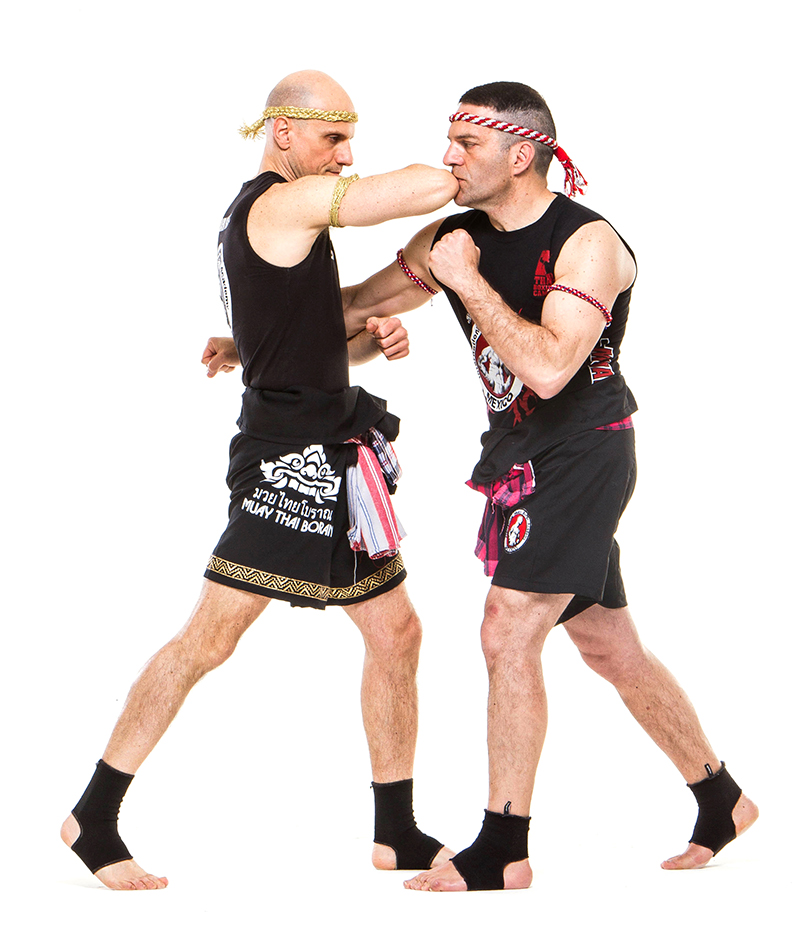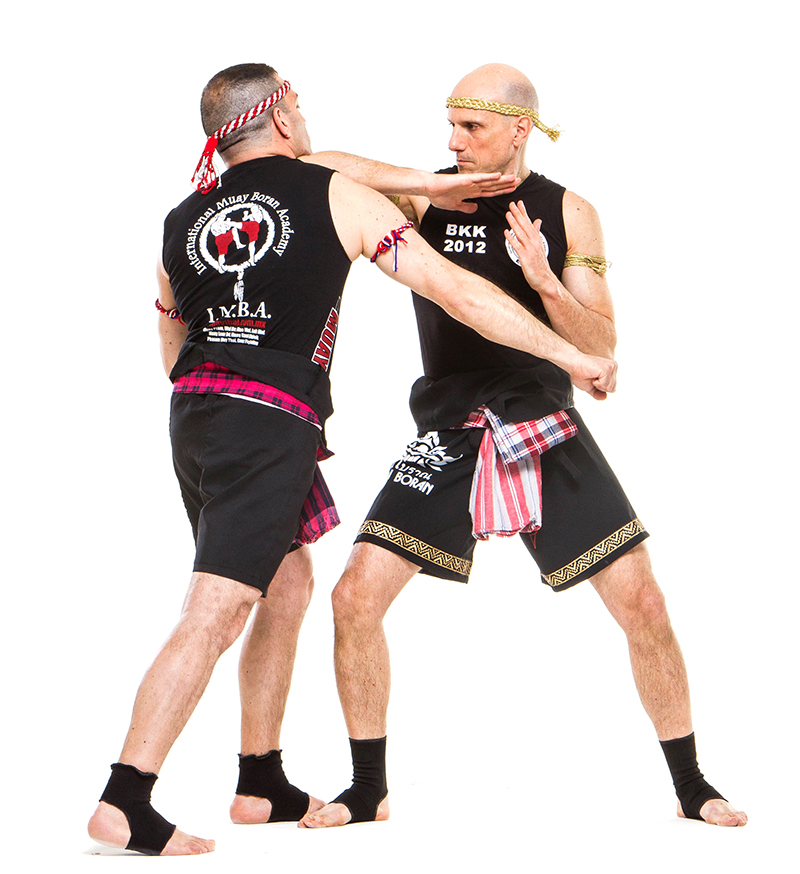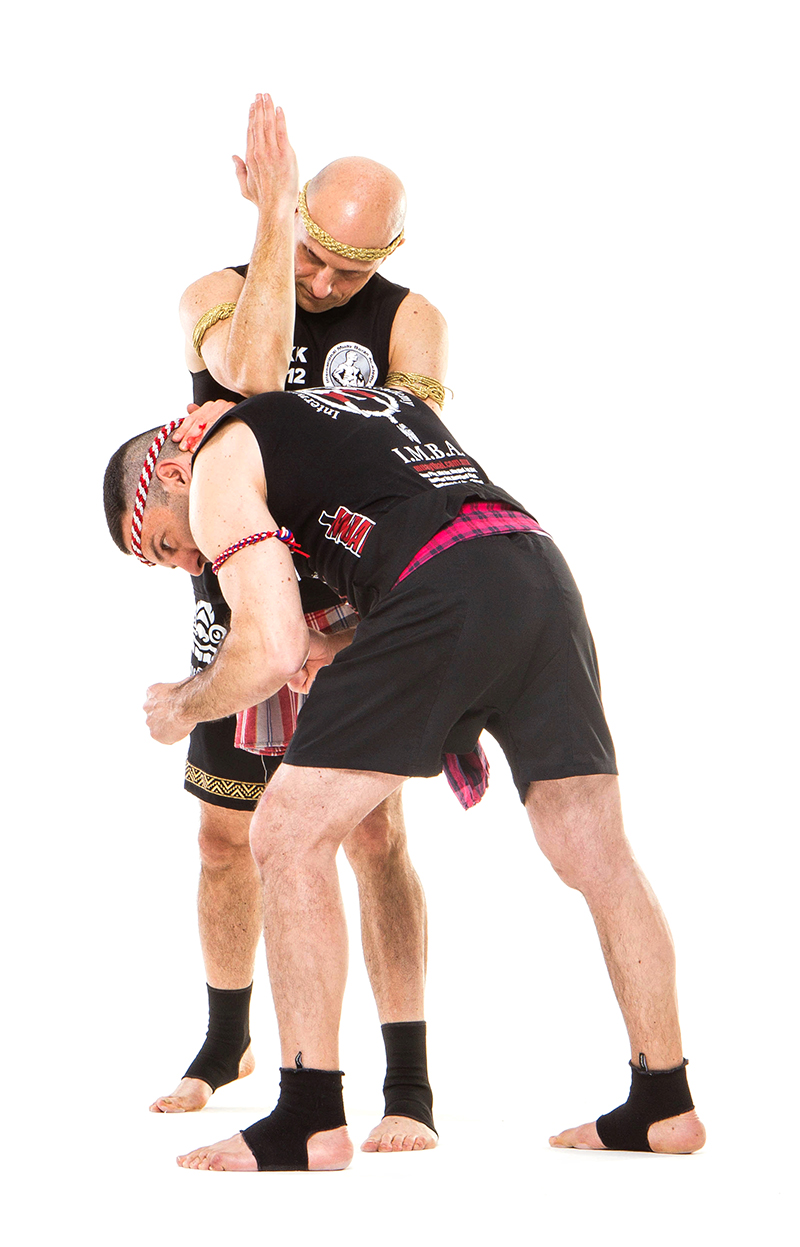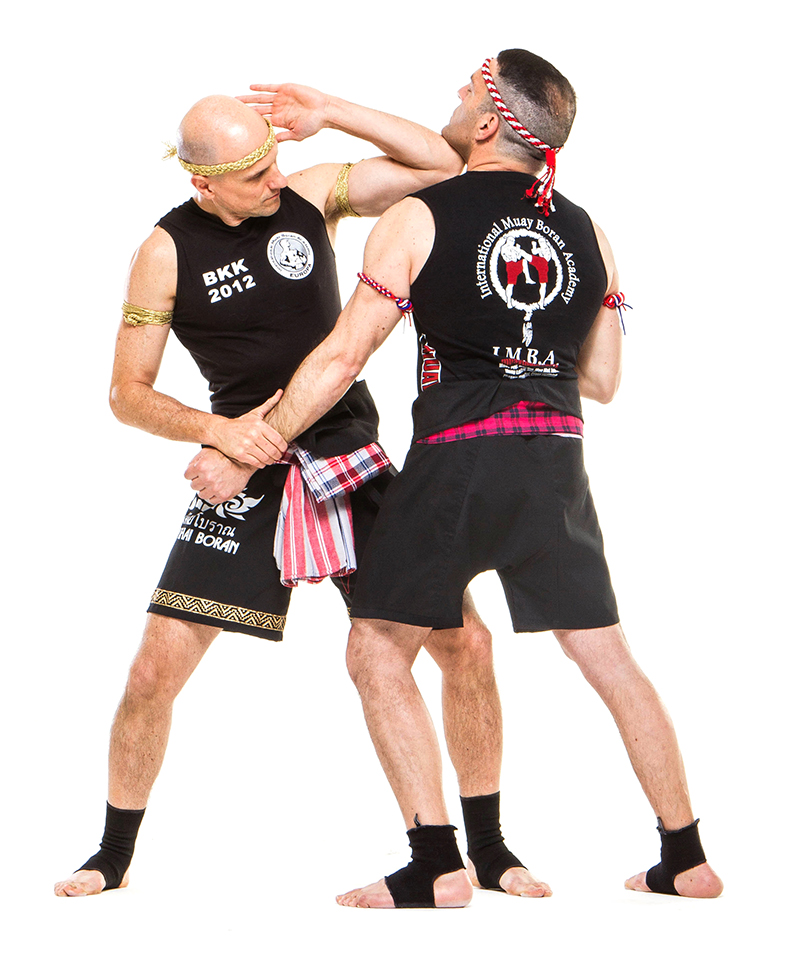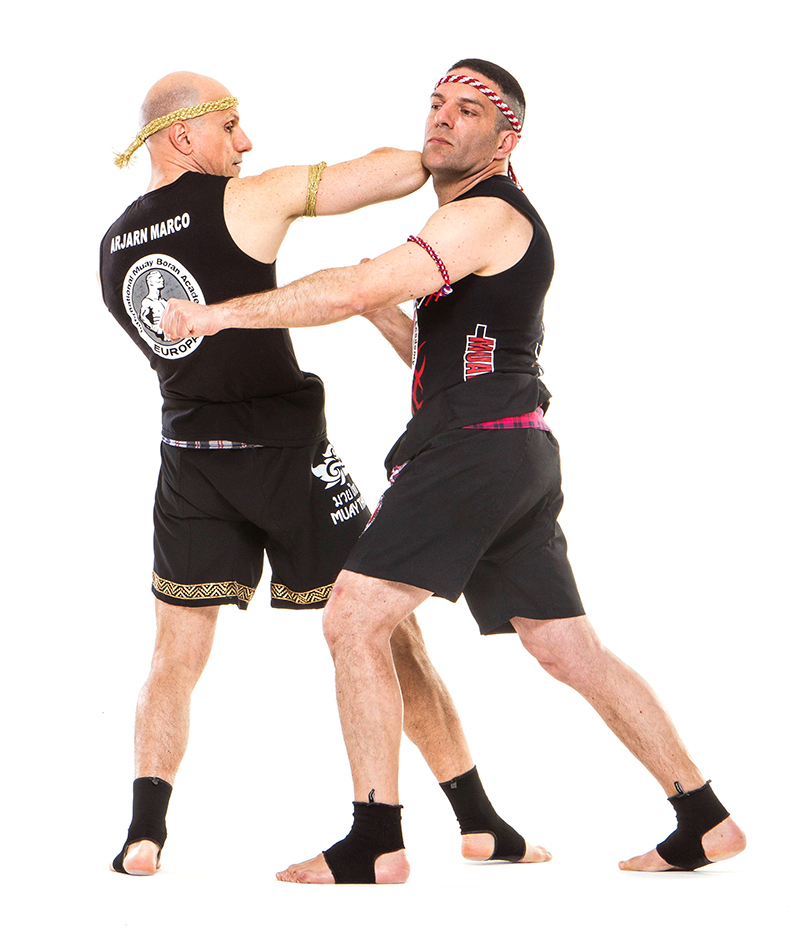
The elbow: Muay Thai’s bladed weapon (part 1)
The elbow strike is perhaps the most feared weapon by all martial arts and combat sports professionals. Many consider it too dangerous a technique to be used in ring fighting: in fact, most martial artists believe elbow strikes should only be studied for self defense situations, not for combat sports. In reality, elbow strikes are a true “trademark” of Muay Thai. In fact, Thai boxers have always being instructed in the proper applications of their elbows in combat and thanks to a regular practice, they also learn to defend effectively from such fierce attacks. As a matter of fact, the tip of the elbow, if properly employed, is a kind of razor blade, thanks to the sharp point formed by the forearm firmly bent over the arm. Such a razor blade is particularly suitable for carrying out fierce attacks that can easily inflict deep cuts on the skin of the skull or the face of the opponent. But, although this effect is the most impressive for many, a Muay Thai expert’s elbows are suitable to be employed both in attack and defense in many and diversified ways. In fact, the elbows are trained to cut, as already mentioned, to pierce the most sensitive bony areas (such as the crown, the temples or the sternum), to break (attacking the bones of the face, the joints or the rib cage), to harm the muscles (of the chest, arms and legs) and even to attack internal organs (the heart, the liver and the kidneys are three classic targets).
From a defensive perspective, the elbows used in combination with the forearms can create an exceptionally strong and solid protective shield around the Muay Boran stylist. Through specific training in traditional Mai Muay forms, students learns to use their elbows as powerful defensive tools against most kinds of fist, knee, leg attacks as well as to block and counter neck, body, arm and leg holds.
For an in-depth study, it is important to learn how to classify elbow strikes according to their trajectories, to their specific combat applications and to the distance between the executor and the target. Traditionally, in Muay Thai Boran, elbow strikes were divided into the following 5 categories (note: most elbow attacks can also be executed with a jump). Each category indicates the kind of energy that generates the elbow strike’s power; for example, a sharp rotation of the shoulders or a sudden bending of the trunk and legs. This apparently gross classification system is very old and certainly predates the most detailed sub-divisions in use in modern times. The apparent simplicity of this method hides the true secret of a correct and effective execution: in fact, a profound knowledge of the principles of body mechanics brings to a full understanding of the intrinsic dynamics of each stroke. As a consequence, the student, almost without realizing it, was guided directly to the heart of each technique without being misdirected by any artificial “choreographic frill”. When working on elbow techniques, modern fighters, just like their ancestors, must never move away from the sole objective of their training: developing pure, devastating effectiveness.
• Category 1 – Sok Wiang Lai: Sok, ศอก (elbow) Wiang, เหวี่ยง (swipe; swing) Lai, ไหล่ (shoulder).
Elbow strikes of this category base their effectiveness on a sharp and explosive shoulder turn that produces a strong roundhouse swing of the attacking arm: this fast movement produces the cut. The energy is directed from the hips towards the shoulders and from there quickly transmitted to the arm. The impact area of the strike is the tip of the elbow. One of the possible effects of this type of blow is the opening of deep gashes on the opponent’s face. The typical technique of this category is the Sok Dtad or horizontal cut.
• Category 2 – Sok Krataek: Sok, ศอก (elbow) Krataek, กระแทก (bump, crash).
In the execution of elbow blows of this category, the attacker aims at piercing the target thanks to a strong forward push of the entire body. The arm is positioned in specific positions, creating a solid “pointed” structure supported by the whole body mass of the executor. Once the arm is correctly positioned, the attacker’s body is violently projected towards the target. The most appropriate example to illustrate the power of elbow strikes of this kind, is a medieval horseman who charges with his spear pointing towards the enemy, breaking through every obstacle that comes in front of him. The typical technique of this group is the Sok Pung or penetrating elbow.
• Category 3 – Sok Dti Lom: Sok, ศอก (elbow) Dti, ตี (hit) Lom, ล้ม (fall).
Elbow techniques used to hit from up to down are listed in this group. In many situations, the most efficient way to attack the opponent with the elbows is to throw your body weapon from up to down. Swing your arm up and down and with a sudden bend of the knees that increases the power of your blow, strike your target with the tip of the elbow. In some cases, it may be necessary to use a part of the opponent’s body (head, shoulder, leg) as a support to perform a jump in order to gain height and execute an even more disruptive blow. The most common example of this category is the Sok Sahb or crushing elbow.
• Category 4 – Sok Soei Kheun: Sok, ศอก (elbow) Soei, เสย (swing up) Kheun, ขึ้น (upwards).
When the distance is particularly short and the opponent is in reach to grab and hold you, do what an experienced fighter would do: keep your guard up, flex your knees slightly and strike with a short, explosive upward swing. Uppercut elbow blows belong to this category. Since it is very difficult to develop power with a short vertical swing, it is essential to learn to use the whole body in the execution of the uppercut elbow: quickly bend and stretch your legs and then direct the stored energy to the hips and, with a strong contraction of the back muscle, swing your bent arm upwards, aiming the tip of the elbow at the target. The typical example of this type of elbow is the Sok Ngad or upper cut elbow.
• Category 5 – Sok Glab Lang: Sok, ศอก (elbow) Glab, กลับ (reverse, change direction), Lang, หลัง (behind, at the back). The last category of elbow strikes is designed to allow the executor to hit an opponent who is attacking from behind. Otherwise, a spinning elbow can be executed to add power to a forward strike through a strong 180° body turn. In both cases, the rapid hip rotation and the contraction of the powerful back muscles make this kind of elbow blows among the most devastating weapons in a Muay Thai fighter’s arsenal. The trajectories and angles of execution of elbows of this type can vary according to the relative positions of the executor and the opponent, the chosen target, the distance between the two fighters and the maneuvers carried out before the blow. The best known example of these elbows is the Sok Glab Lang or spinning back elbow.
In order to properly train elbow blows, the first step is to perform these techniques in every training session while shadow boxing (Dtoi Lom): this is mainly done to perfect the execution of individual strokes in motion. The second step is to train with a coach who wears striking mitts (Pao Jiao Koo and Pao San Koo): this will teach students to throw full power attacks against a moving target. Attack, defense and counterattack must be combined harmoniously and continuously. In order to do that, the pad-man should enhance the development of timing along with the sense of distance needed to close the gap with the opponent, grab and hit in the most efficient way. The essential complement to this kind of training is heavy bag work: hitting the bag is important to further condition the naturally hard body weapon and to increase the power of elbow strikes, especially from a very short distance, i.e., at grappling range. Traditionally, elbow hardening was performed by repeatedly hitting a coconut with the tip of the elbow until it was broken.
Finally, elbow strikes should be trained in pre-arranged or free grappling sparring. The application of elbow attacks in sparring sessions must always be done with extreme caution and without excessive power. Moreover, for the most dangerous techniques, training solo forms (Ram Yuth) is recommended: through this kind of practice, it is possible to refine many of the techniques rarely executed in combat as well as their particular defences, thus rapidly increasing the technical skill of all practitioners of this Art who strive to be well versed in martial combat.


